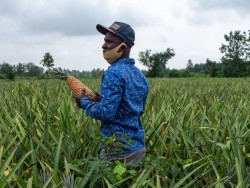LDC Graduation: Stories of smooth transition
Of the 46 least developed countries (LDCs), 16 are at different stages of graduation. And, though graduation offers many opportunities, it also presents its own unique challenges for countries in this category. As such, various international support measures (ISMs) have been put in place, or extended, to ensure smoother transitions and sustained developmental progress in the post-graduation phase.
Reversing the decline in LDCs' services exports post-pandemic
• Although the services sector has emerged as a new engine of economic growth, the lingering effects of the COVID-19 pandemic have severely affected services exports from the least developed countries (LDCs), with an approximate loss of almost USD 29 billion in foregone exports over the past three years.
• While global services exports have rebounded from the shock of the COVID-19 pandemic, the recovery in the LDCs is lagging, potentially with long-term consequences for achieving the ambitions of the Doha Programme of Action for the LDCs and several Sustainable Development Goals.
• Urgent actions by the LDCs and their trading and development partners to improve utilization of the WTO Services Waiver, incentivize foreign direct investment (FDI) and technology transfer, promote regional trade initiatives, leverage Aid for Trade, and address the digital divide can help reverse this trend, enabling the LDCs to benefit from a services-led transformation.

Lessons from Cambodia: how it is outgrowing its least developed status through openness
The Doha Programme of Action for LDCs (least developed countries), adopted by UN member states in 2022, emphasizes that LDCs need assistance to help them graduate from their least-developed status and outlines a smooth transition plan.
Some LDCs, however, are using their own proactive strategies to not only graduate from the LDC category but to do so on a solid footing that ensures a sustainable and irreversible graduation.
Cambodia, which is projected to graduate from LDC status by 2027, is one such country. The country has even taken bold steps to expedite its transition to an upper-middle-income country by 2030 and a high-income country by 2050.


